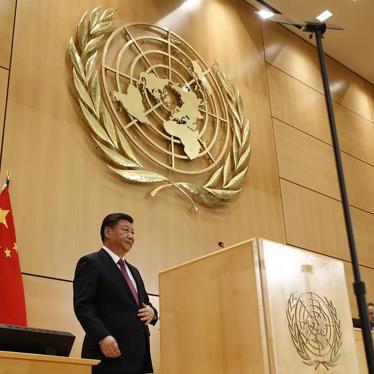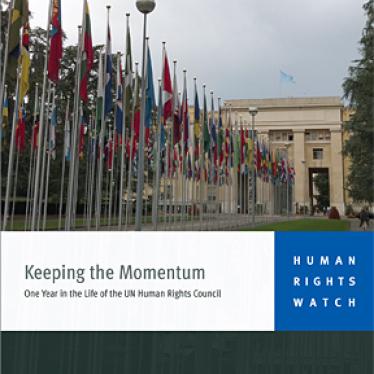(New York) -- The Nepali government must ensure there is no repeat of the April 4 incident in which police used excessive force against peaceful protesters, Human Rights Watch said today. The government should promptly and independently investigate the incident and discipline or prosecute as appropriate all police officials, including those at the highest levels, found to be responsible.
On April 4, police attacked and injured at least 150 people in Kathmandu during an "anti-regression" march organized by five opposition parties. Police were seen wading into the crowd and beating peaceful protestors with laathis, wooden sticks carried by police for crowd control. The parties were demonstrating for a return to multi-party parliamentary democracy, a demand consistently articulated since October 4, 2002, when King Gyanendra Bir Bikram Shah assumed executive authority and suspended the constitution indefinitely.
"The violence by Nepali police was shocking and unnecessary," said Brad Adams, executive director of the Asia Division of Human Rights Watch. "It is particularly disturbing given the government's recent public pledges to abide by a code of conduct."
Beginning with the first day of protest on April 1, 2004, police forces were deployed around the protesters, creating a security cordon which marked off areas prohibited to protestors. The leaders of the protest stated publicly that their demonstration would be a peaceful one. However, the government declared certain areas leading towards the Royal Palace as zones prohibited to protestors and declared that security forces would be authorized to immediately open fire on any violators. While some skirmishes had been anticipated, until April 4 the protests passed off relatively quietly. Eyewitnesses, including independent observers, said that there had been no violence by the protesters the day the police attacked.
The worst violence apparently took place well within the security cordon. Eyewitnesses reported the police started encircling the protesters, closing off all exit routes. They then attacked the protesters some 200 meters away from the prohibited zones. The police attacked with tear gas, rubber bullets and laathis embedded with nails. Eyewitnesses and victims told Human Rights Watch that the police aimed their laathis for the head, and then continued hitting the protesters even after they fell.
One of the areas of attack was directly in front of Bir Hospital, the main hospital in Kathmandu. Victims being rushed to the hospital describe passing through a thick fog of tear gas immediately at the entrance of the emergency ward. Doctors and medical workers in the hospital have since protested the police use of tear gas at the entrance to the hospital. Among the injured were two children and several leading members of the protesting parties. Five of the injured are still in critical condition at Bir Hospital.
"The Nepali government should promptly establish an independent investigation to analyze why the security forces acted with excessive force," Adams said. "This is a dangerous escalation of police violence, and the government should take immediate steps to ensure that such incidents will be punished and will not be repeated."
Human Rights Watch called on the Nepali security forces to abide by the U.N. Basic Principles on the Use of Force and Firearms by Law Enforcement Officials in policing demonstrations. The Principles require that law enforcement officials, in carrying out their duty, shall as far as possible apply non-violent means before resorting to the use of force. Whenever the lawful use of force is unavoidable, law enforcement officials must use restraint and act in proportion to the seriousness of the offense. The legitimate objective should be achieved with minimal damage and injury, and preservation of human life respected.
"It is certainly not necessary to use sticks with nails to police a peaceful demonstration," said Adams. "The government and police should immediately make a public commitment to abide by international standards on the use of force so Nepalis exercising their right to peaceful protest can do so without fear of being attacked."
Human Rights Watch reitereated the need for the current session of the U.N. Commission on Human Rights to adopt a resolution that would authorize the Office of the High Commissioner for Human Rights to assist Nepal's National Human Right Commission to monitor, investigate and report on the human rights situation in Nepal, and to offer technical assistance on subjects such as the U.N. Basic Principles on the Use of Force and Firearms by Law Enforcement Officials and the proper way for police to respond to demonstrations.








